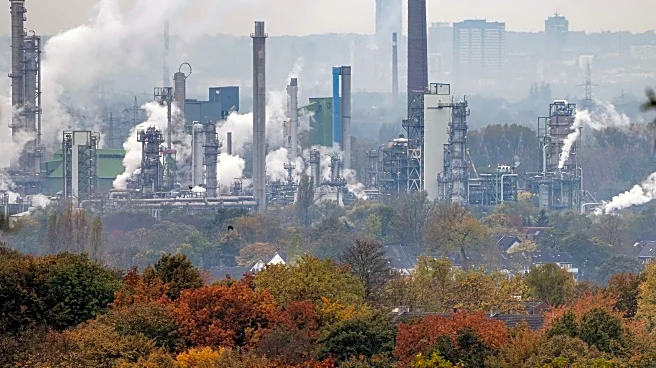What's Happening?
New research from Cranfield University, published in Nature Climate Change, has revealed that Artificial Light At Night (ALAN) increases ecosystem respiration, leading to greater carbon release from plants,
microbes, and animals. This heightened carbon release is not matched by an increase in photosynthesis, resulting in diminished carbon storage within affected ecosystems. The study utilized satellite data and carbon flux monitoring sites to demonstrate ALAN's widespread impact on the global carbon balance. The findings suggest that light pollution, affecting approximately a quarter of Earth's land surface, significantly shifts the global carbon balance.
Why It's Important?
The study highlights the overlooked environmental impact of light pollution, which is often omitted from climate models. As artificial light increases annually, its contribution to carbon release poses a challenge to global carbon budgets and climate change mitigation efforts. Addressing light pollution could offer a rare opportunity for a 'win-win-win' scenario, benefiting the environment, energy efficiency, and human health. The research calls for improved lighting design to reduce light pollution, which could be implemented quickly compared to other climate stressors.
What's Next?
The Cranfield team advocates for the inclusion of light pollution in climate models and suggests adopting dimmable, directional, and spectrally sensitive lighting technologies. These changes could significantly reduce light pollution and its environmental impact. The study encourages policymakers and communities to prioritize lighting improvements as part of broader climate action plans.












